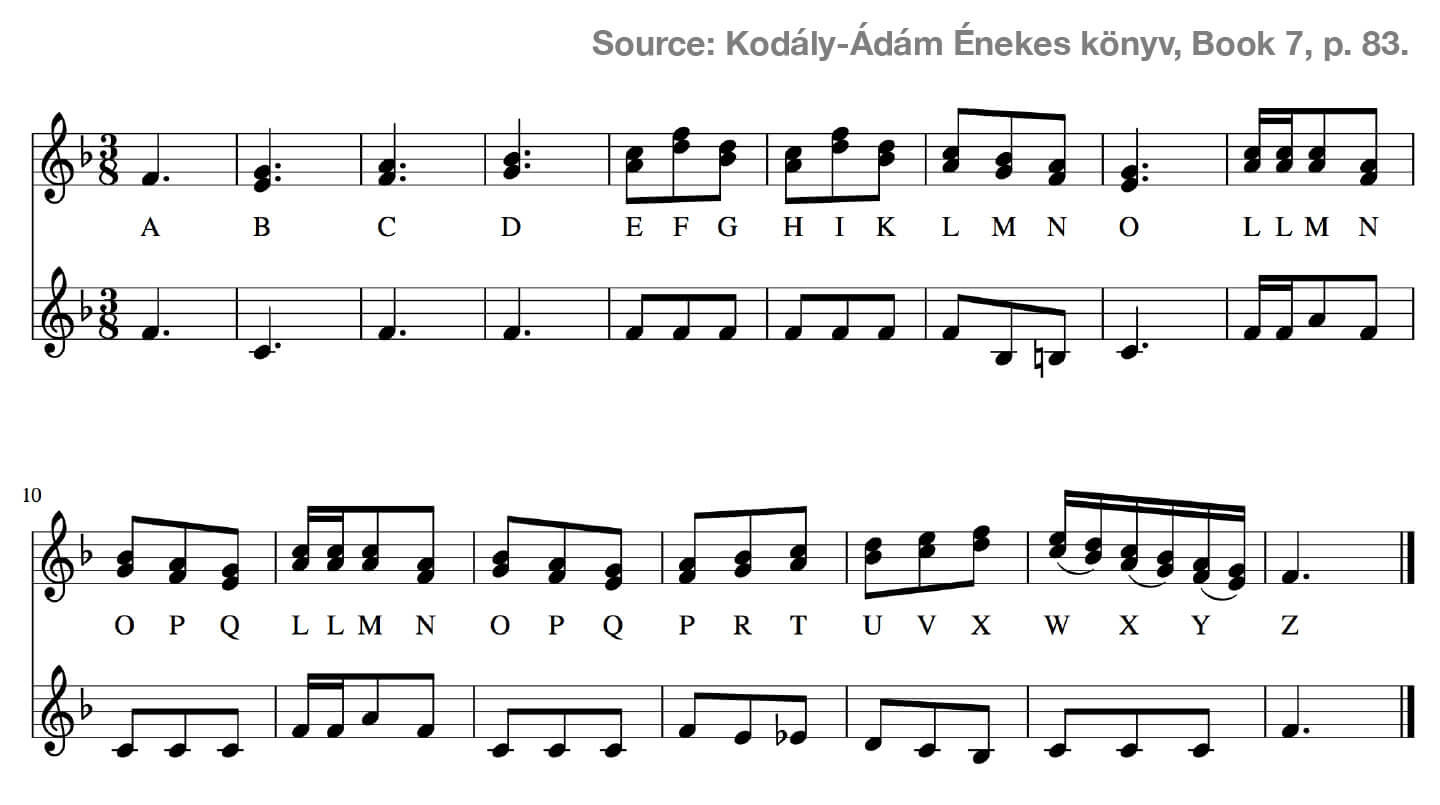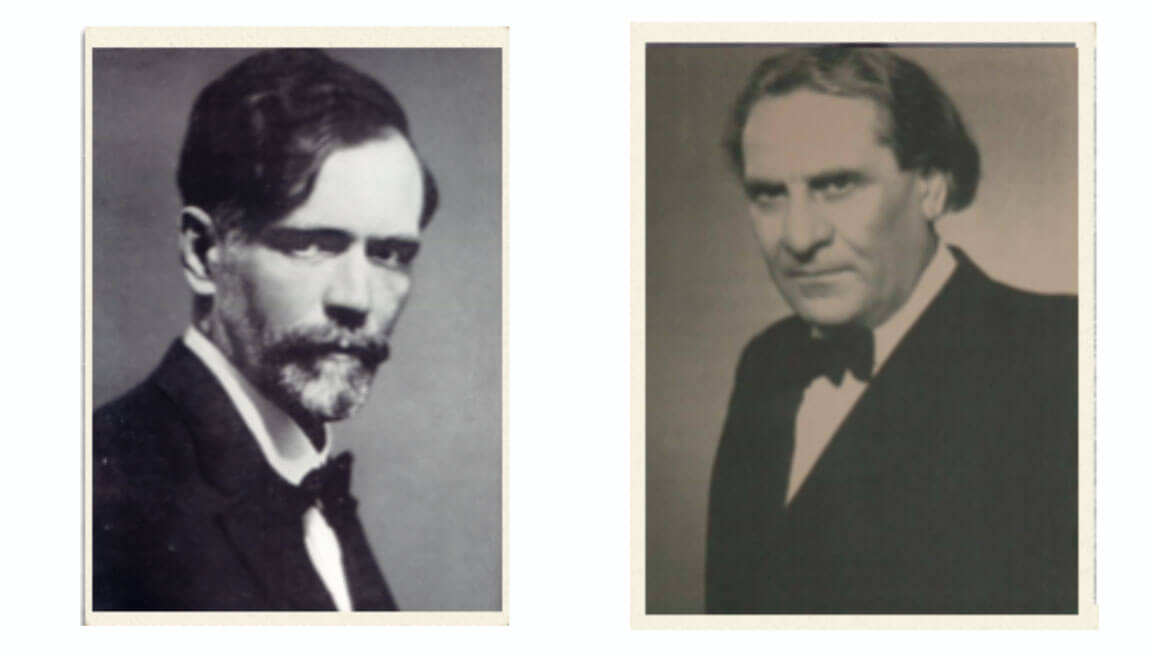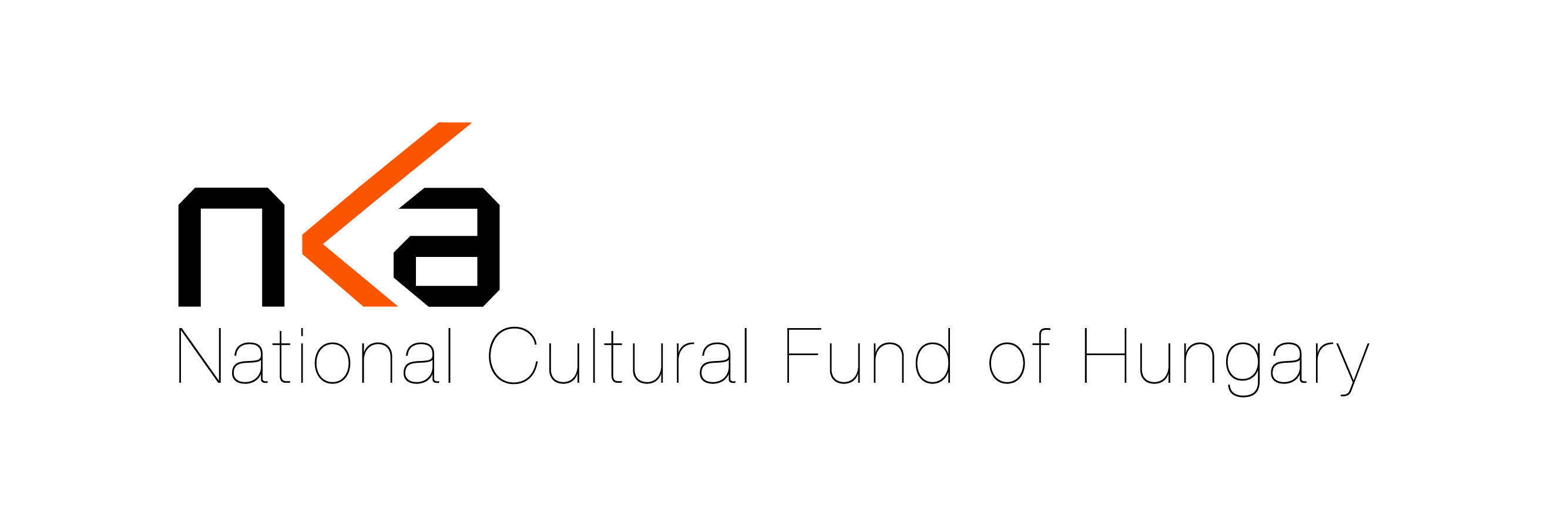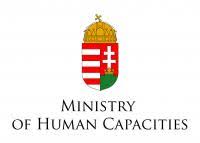Development of polyphonic skills and part-singing based on the
Kodály - Ádám
Énekes könyv (Singing Books) series
Book 7 (age 12-13)
Summary of musical concepts learnt through the folksong repertory Kodály-Ádám Singing Books, Book 7.
Rhythmic elements, metre:
- triplet
- 3/2, 2/2 (psalm melodies)
- 7/4, 5/4 meter
- changing meter (3/4+2/4, 4/4+5/4)
Melodic elements and scales:
- pentatony, pentachord, hexachord
- modes: dorian, mixolydian, phrygian
- mixed modes:
- major + minor
- mixolydian + aeolian,
- melodic minor + dorian major
- minor scales (natural, harmonic, melodic)
- special scales: l,-t,-d-r-ma, l,-t,-d-ri, di-r-m-f-s,
- chromatic notes “si”, “fi”, “ri” within the same tune alternation of “s”+“si”, “d”+“di”or “t”+“ta”
Two-part rhythmic exercises
Rhythm exercises for practising triplets
Example 185
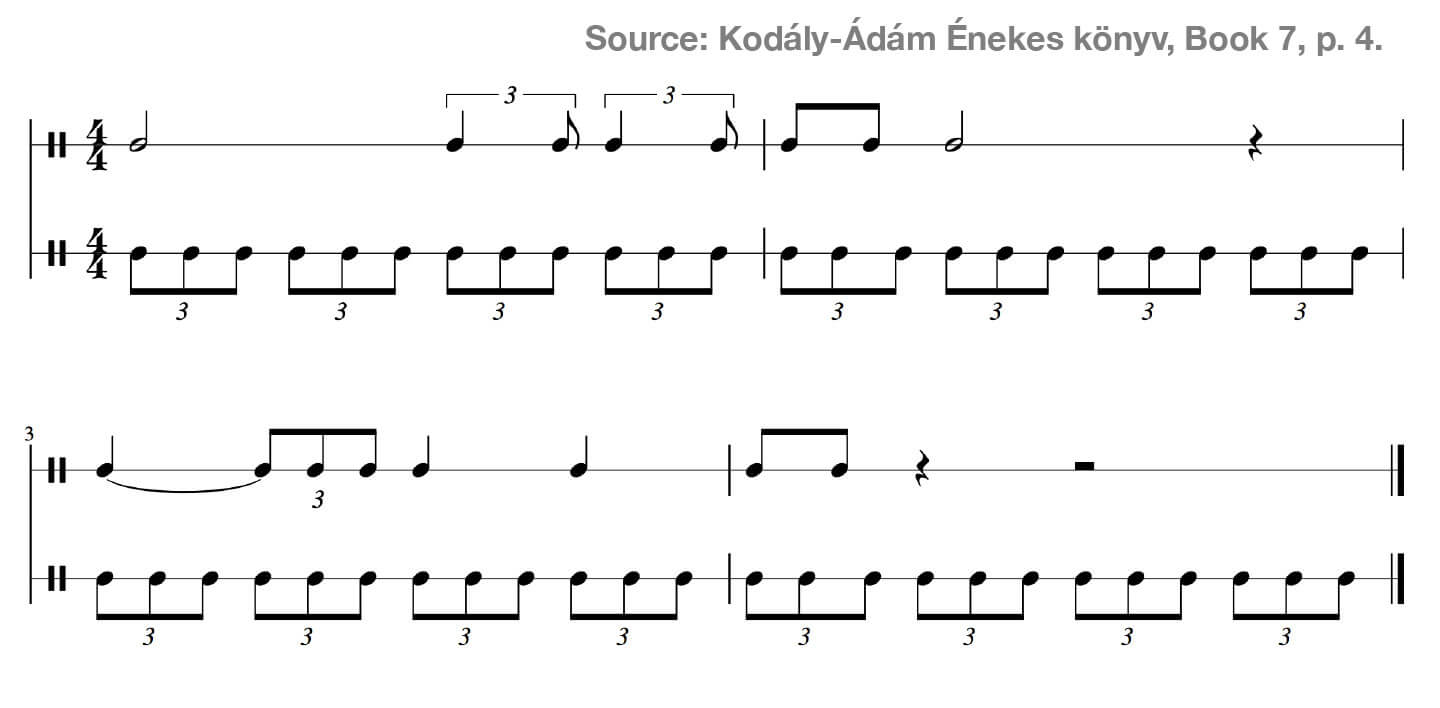
Three-part rhythmic exercises
Rhythm exercises for practising triplets
Example 186

recite this three-part rhythm exercise to the notes of either the major triad (d-m-s) or those of the minor triad (l,-d-m)
Example 187

Two-part material short excerpts from the music literature
Example 188 (Johann Adolph Hasse: Air)
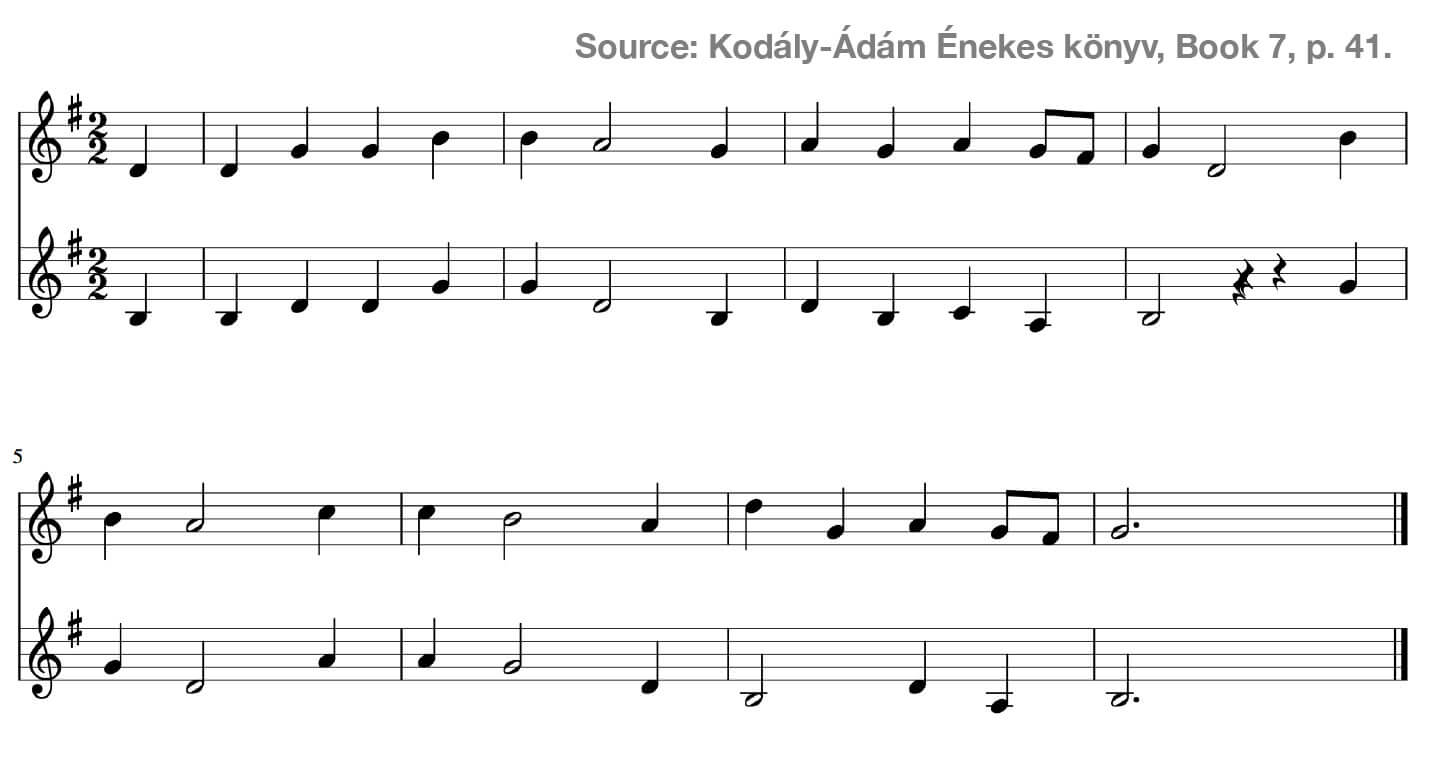
Example 189 (Bicinium by Michael Praetorius)
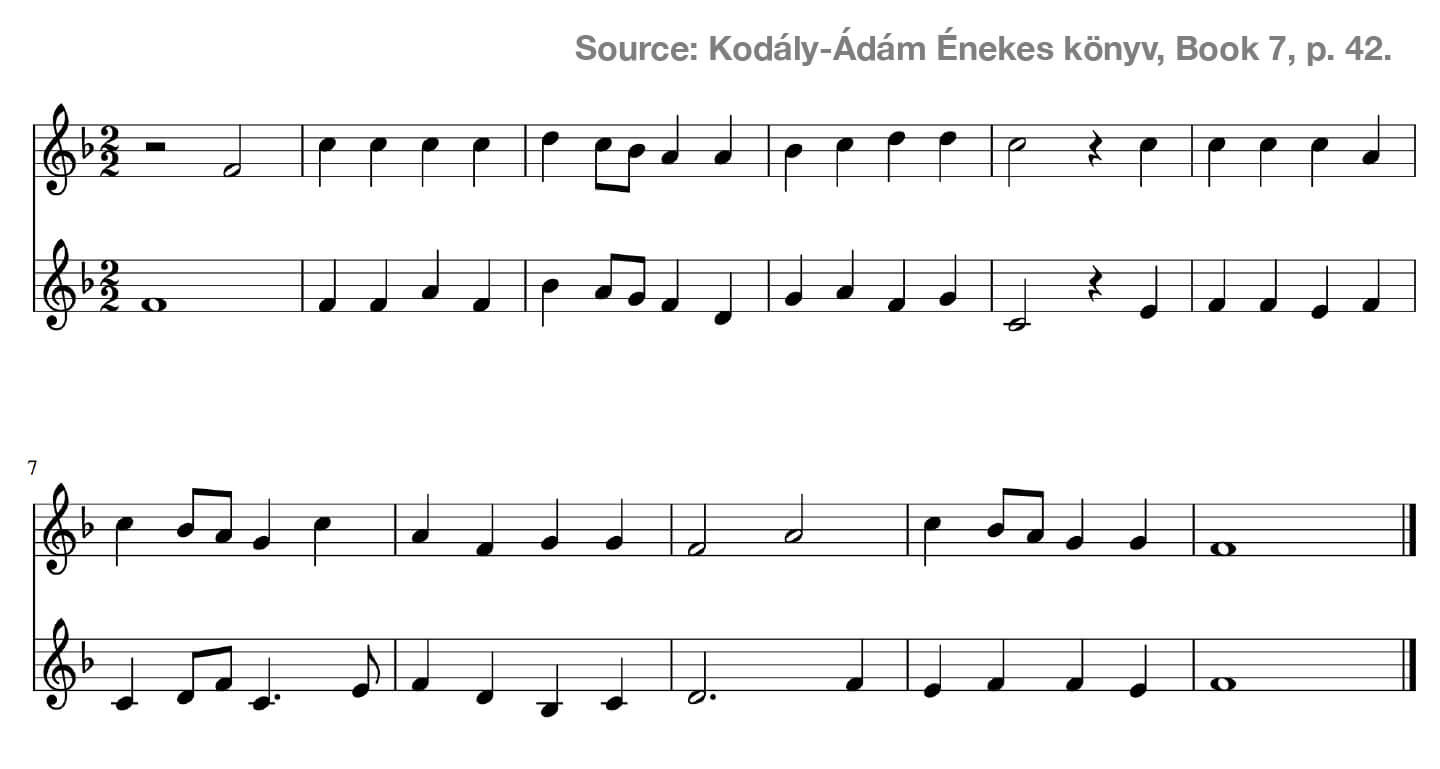
Example 190 (Old Hungarian dance tune)
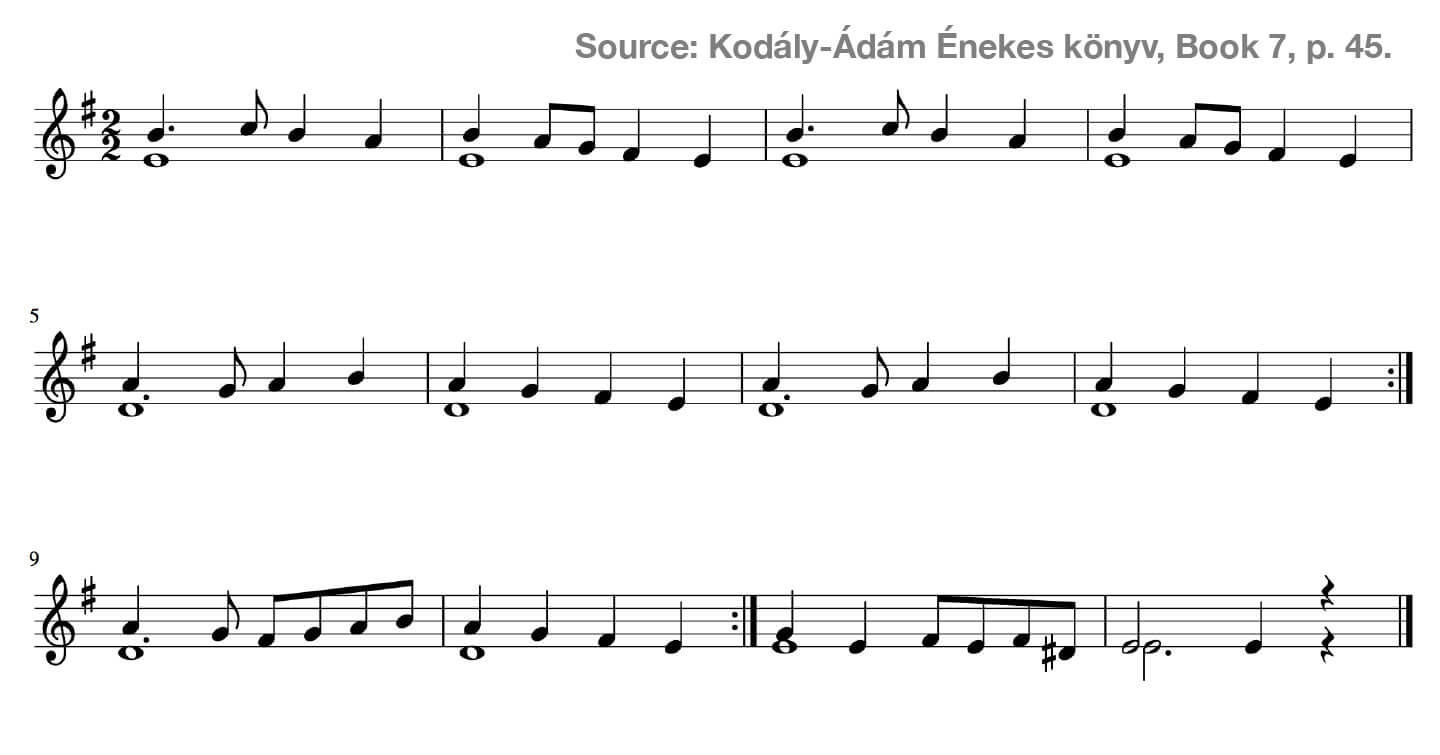
Example 191 (Old Hungarian dance tune)
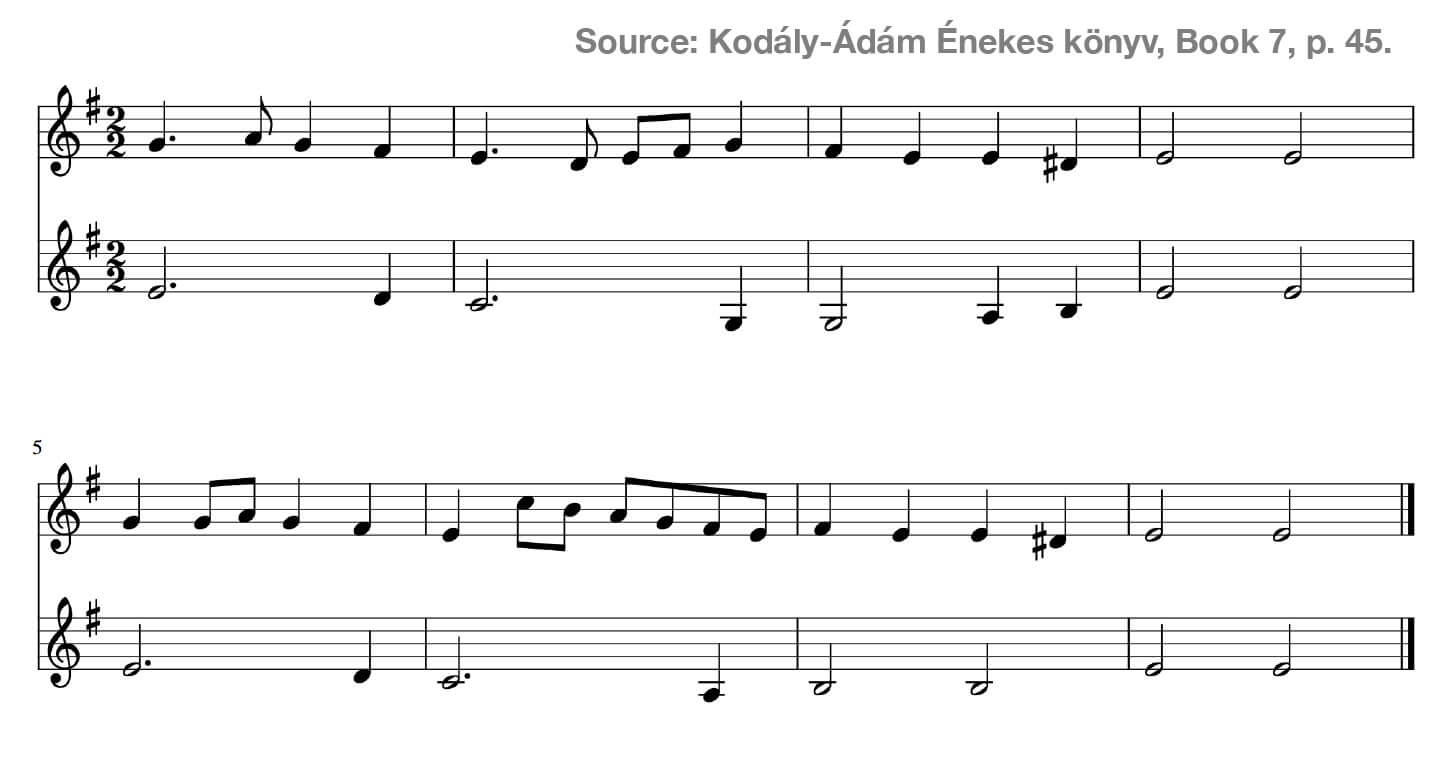
Example 192 (Old Hungarian dance tune)
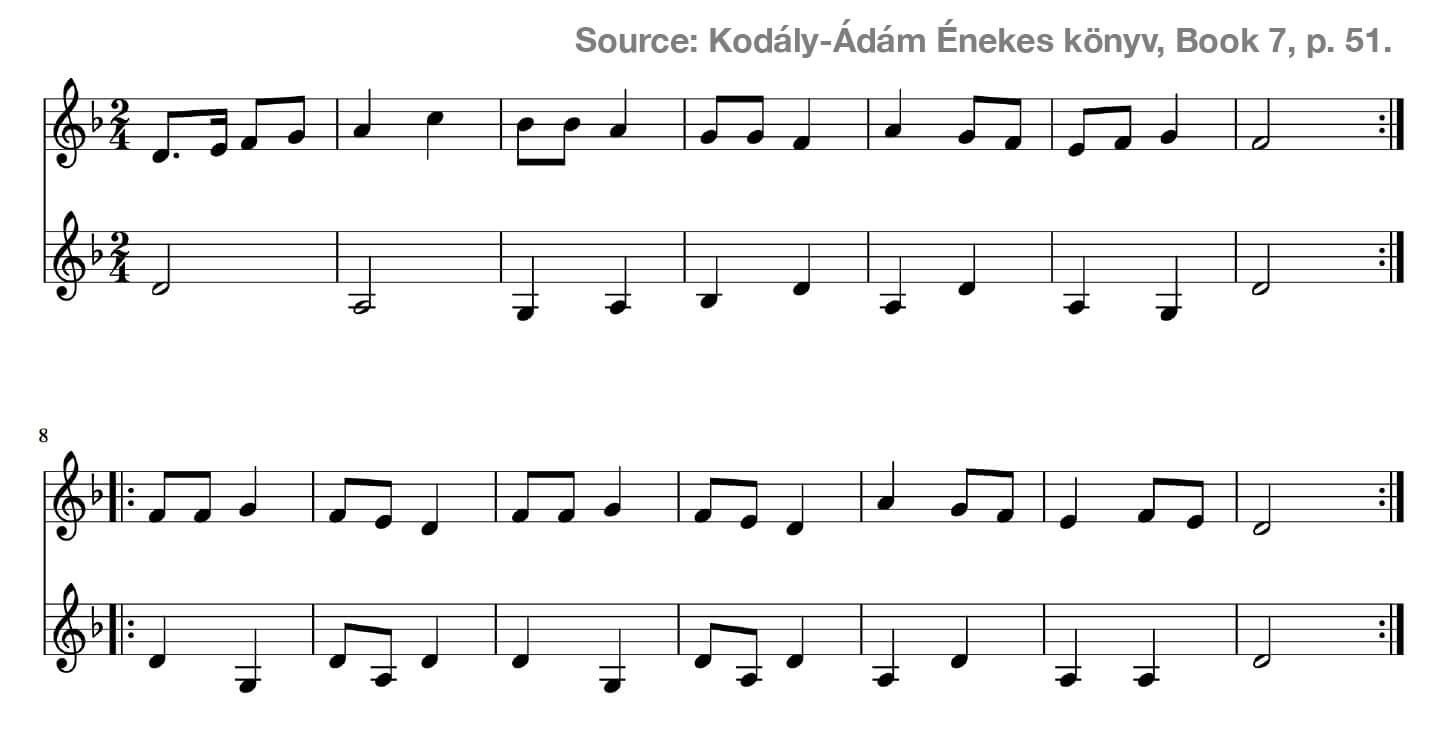
Example 193 (Old Hungarian dance tune)
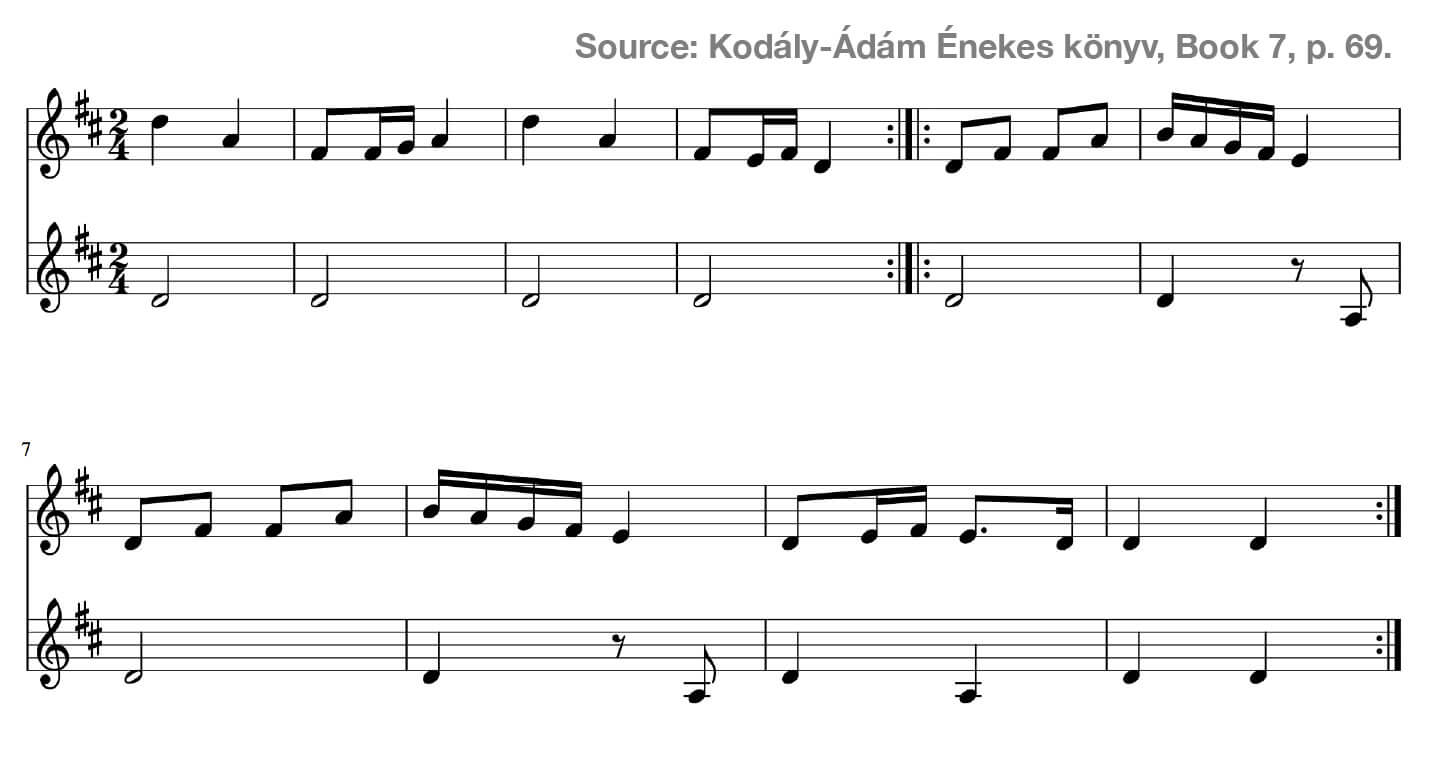
Example 194 (Old Hungarian dance tune)
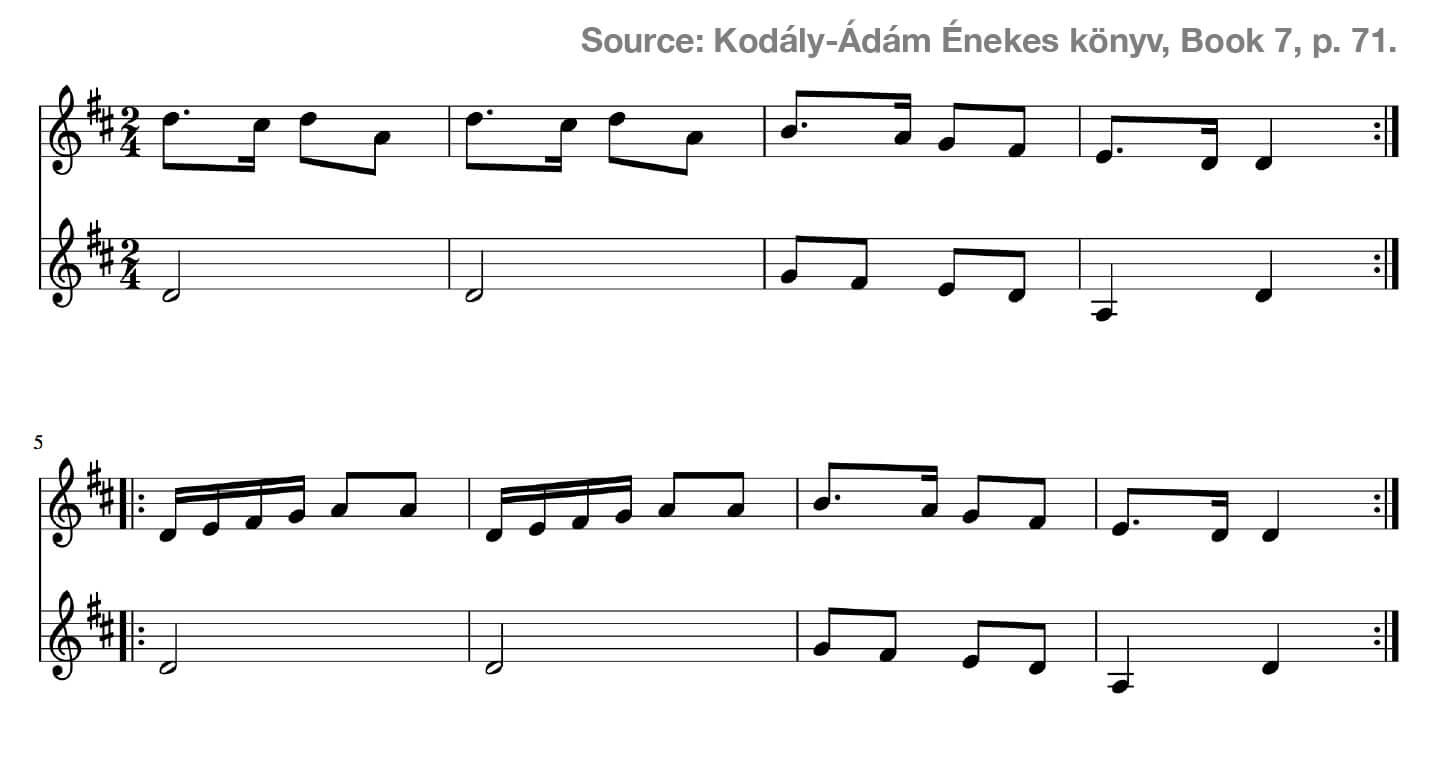
Example 195 (Old Hungarian dance tune)

Example 196 (Duet by Georg Friedrich Händel)
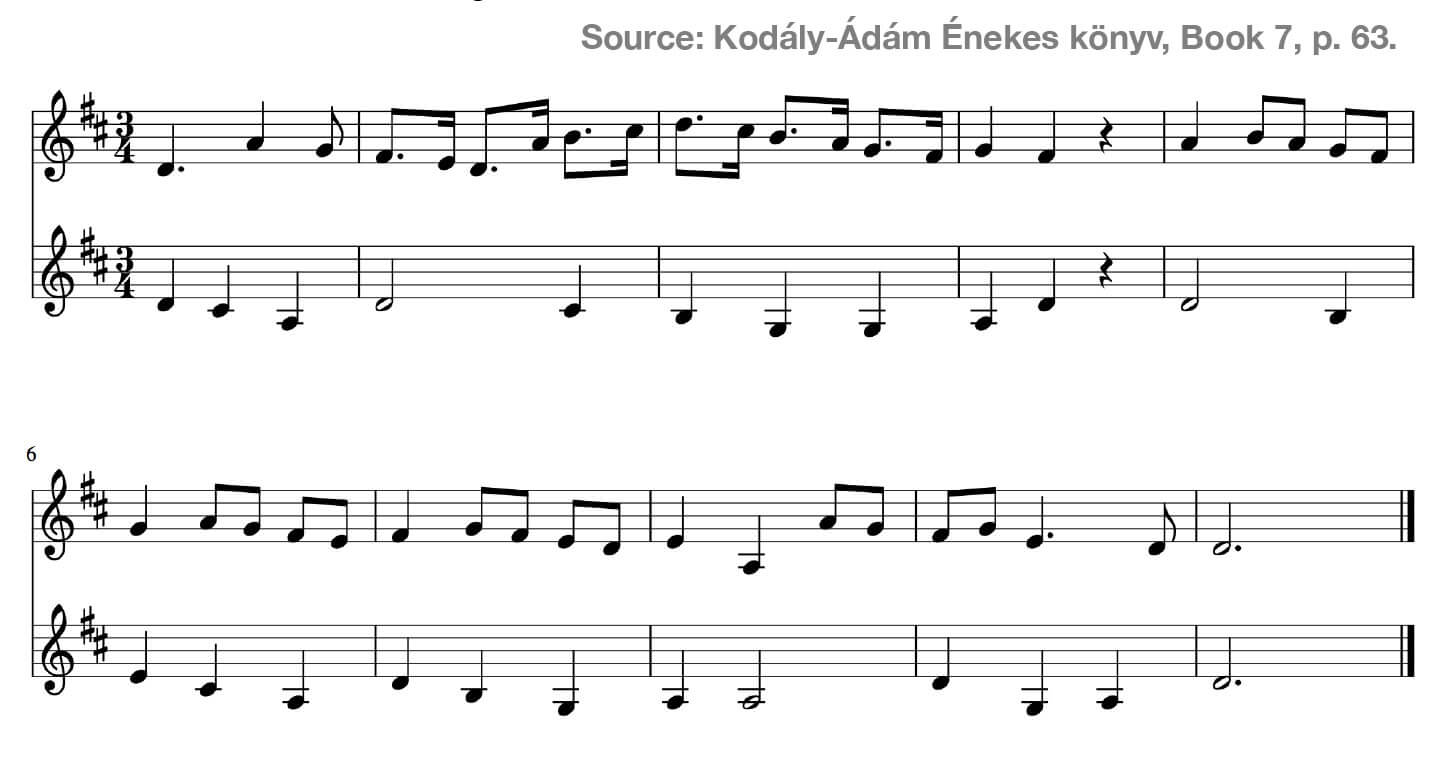
Example 197 (Duet by Georg Friedrich Händel)
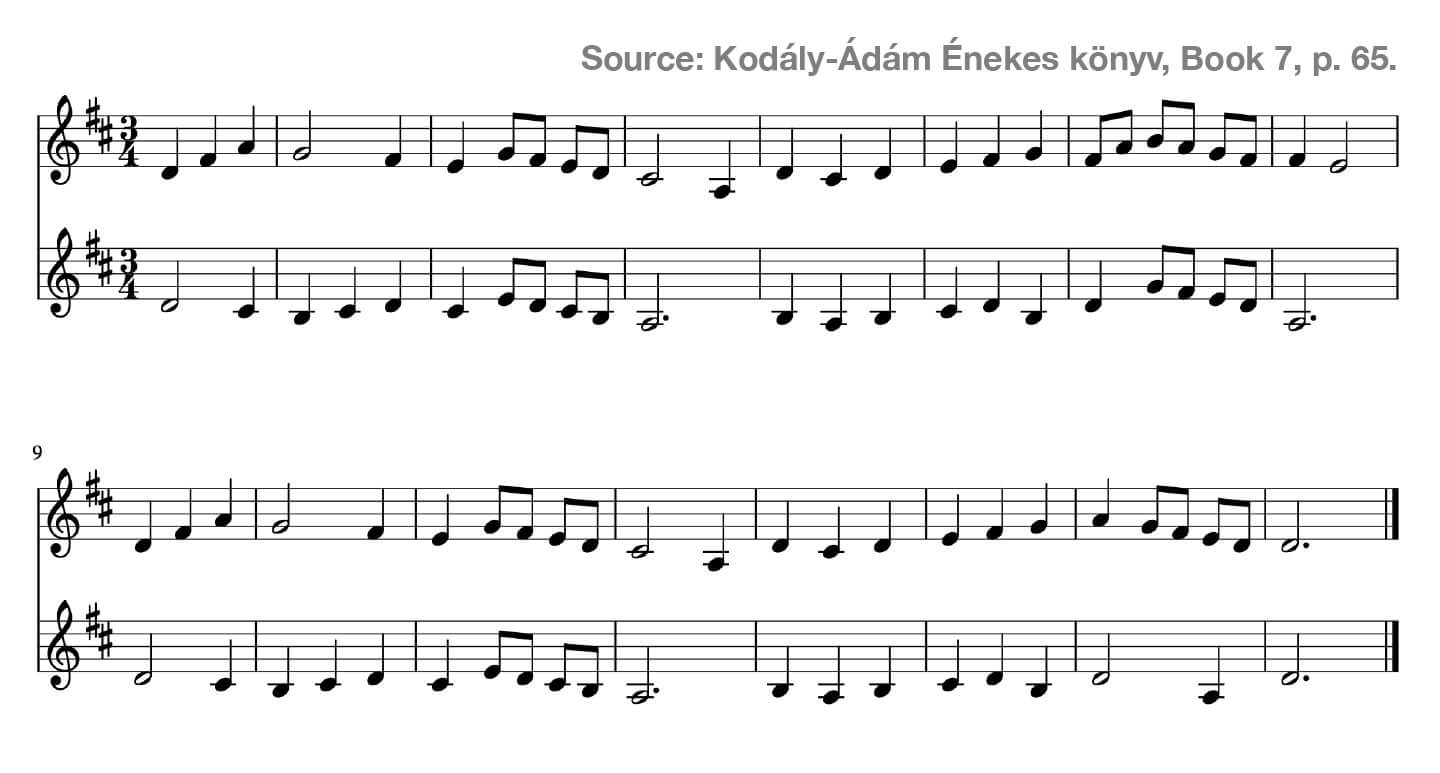
Two- and three-part material, imitative counterpoint
Example 198 (Béla Bartók: Mikrokosmos vol. I.)

Example 199 (Béla Bartók: Mikrokosmos vol. I.)

Example 200 (G. P. Da Palestrina: Surrexit pastor bonus)

Suggested further material:
Zoltán Kodály: Bicinia Hungarica No. 83. - “Réten, réten, sej, a kassai réten...”
Zoltán Kodály: Bicinia Hungarica II. No. 59. - “Mostan kedvem kerekedik...”
Three-part exercises
Example 202
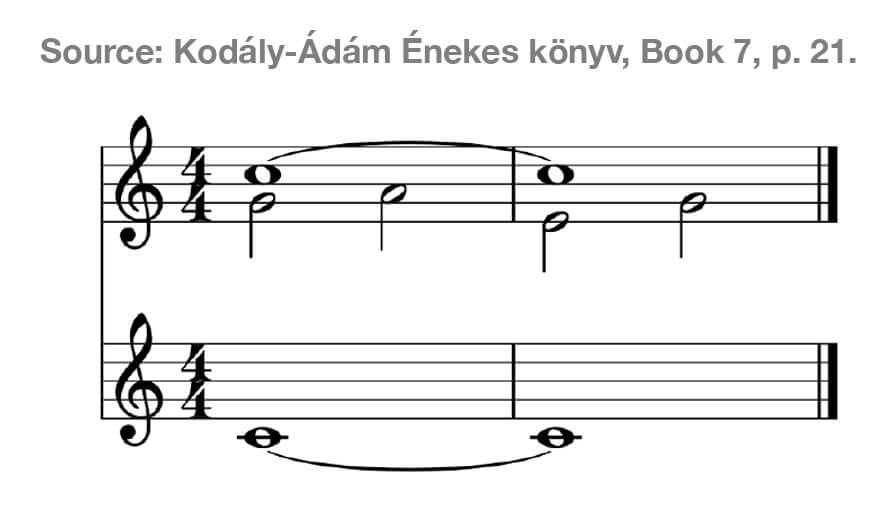
Example 203

Example 204
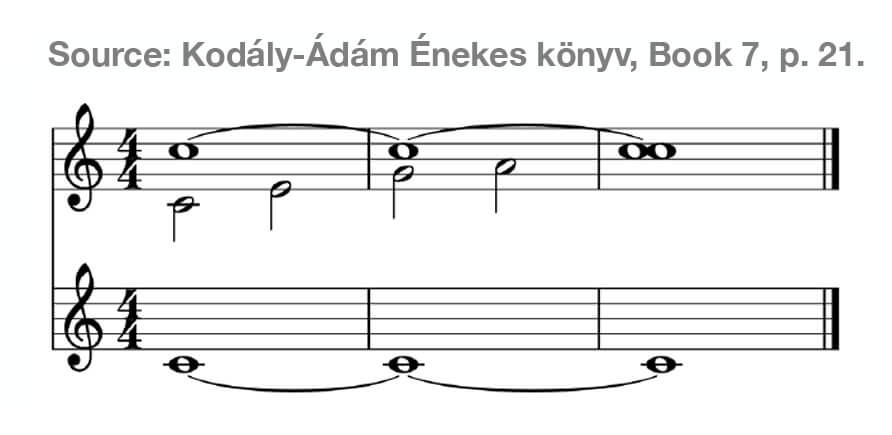
use this and other similarly short three-part exercises for the development of intonation, make sure that the octave is sensitively balanced and the moving middle part is nicely adjusted to the long-held notes
Example 205-210
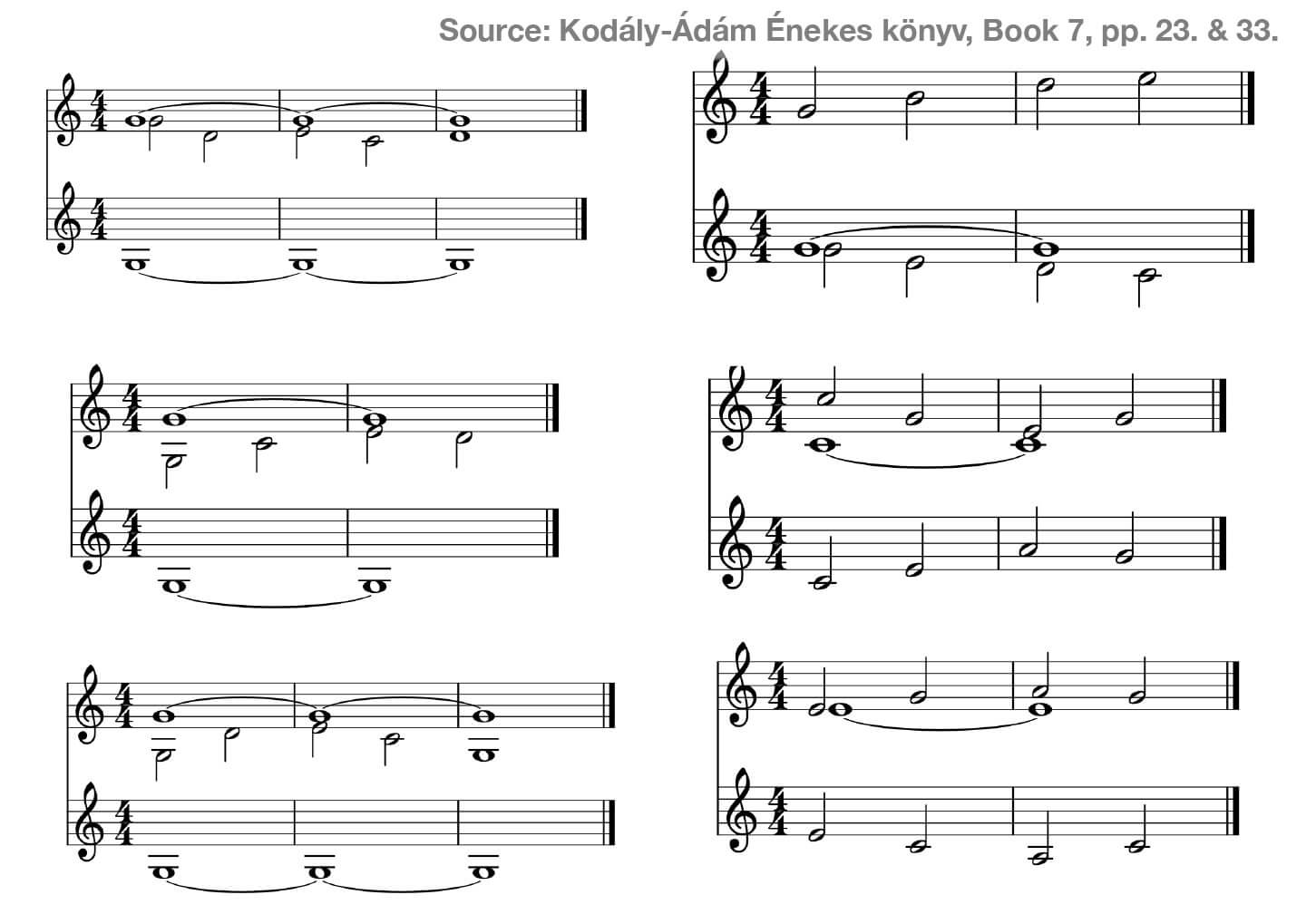
Example 211-214
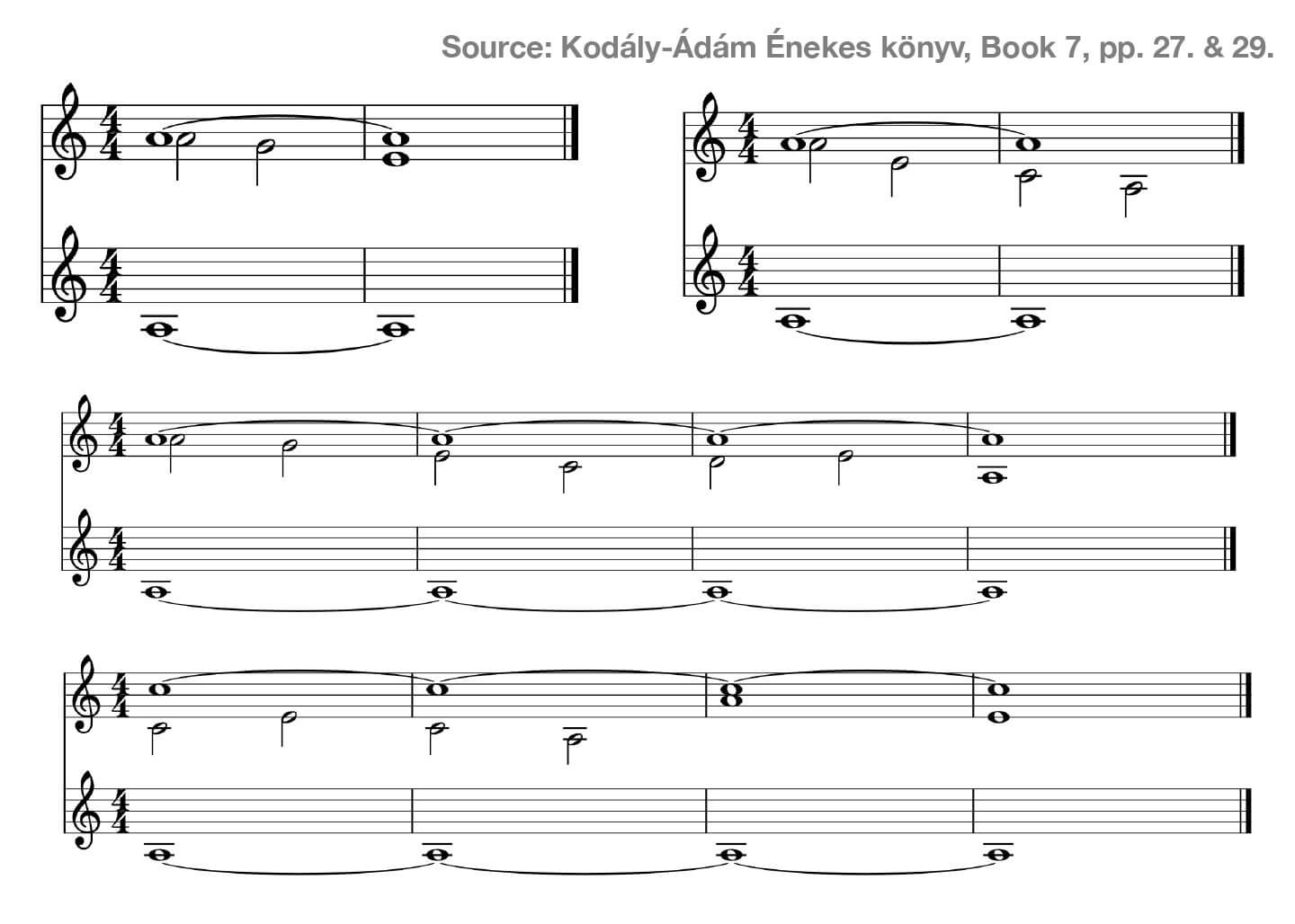
Example 215

Example 216-219
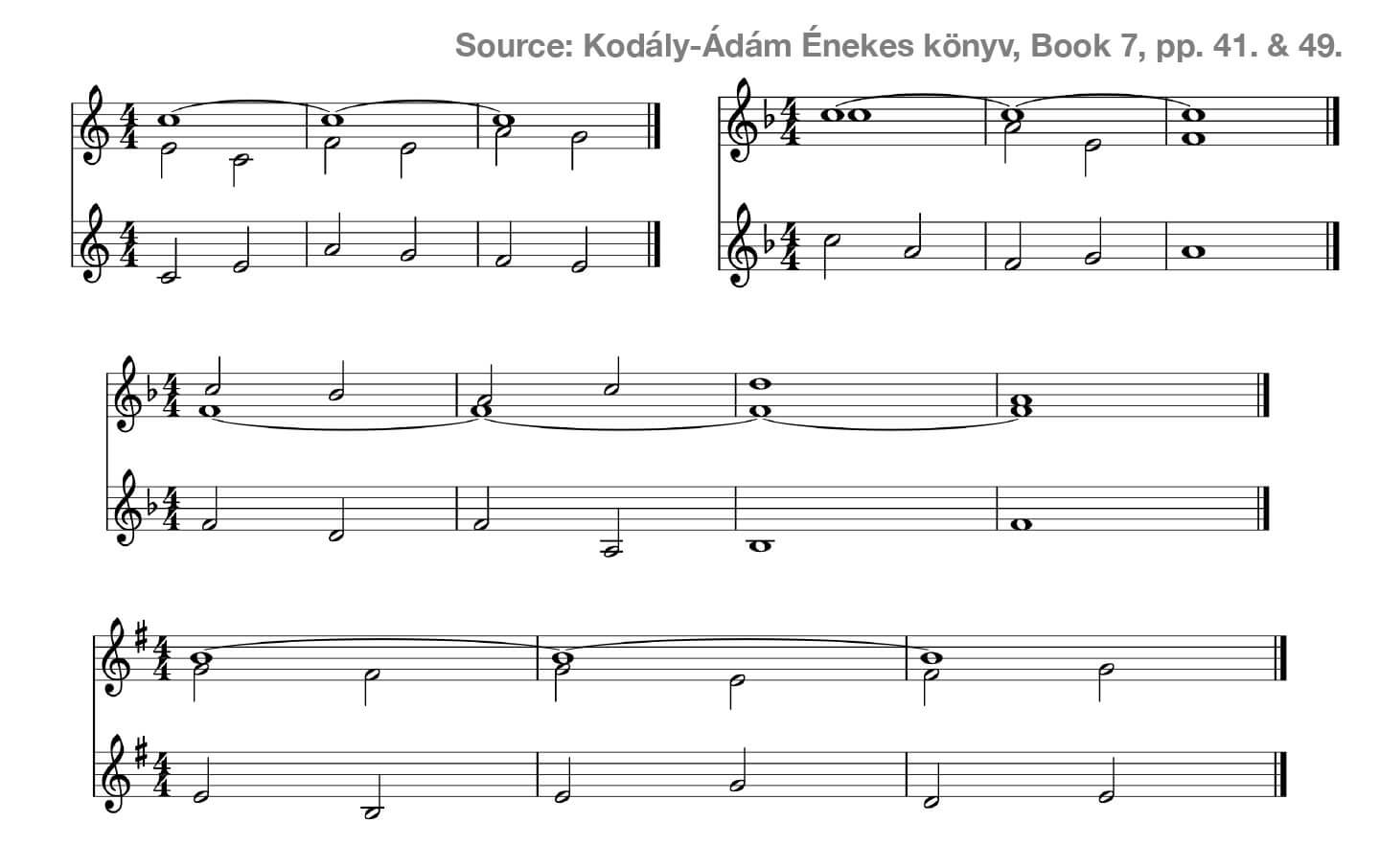
Example 220-222
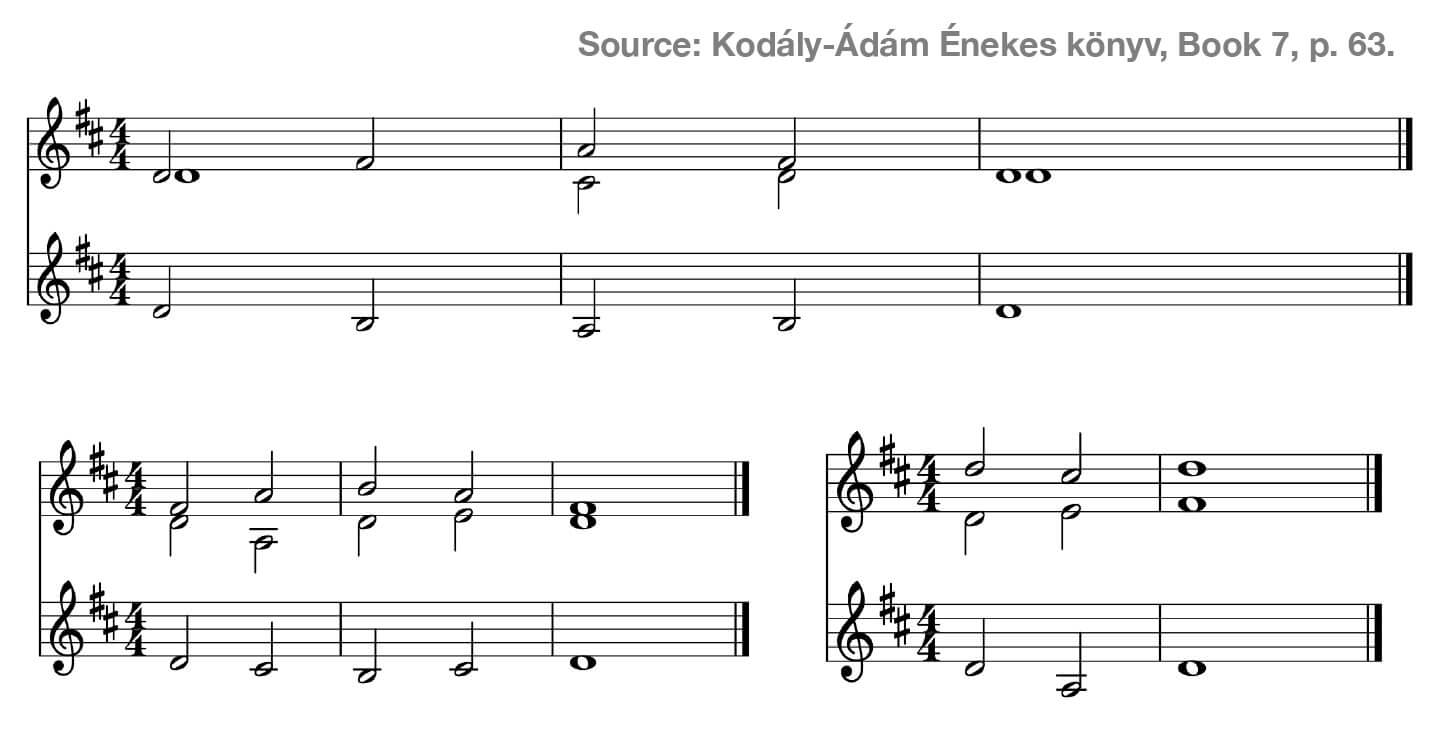
Canons
Example 223
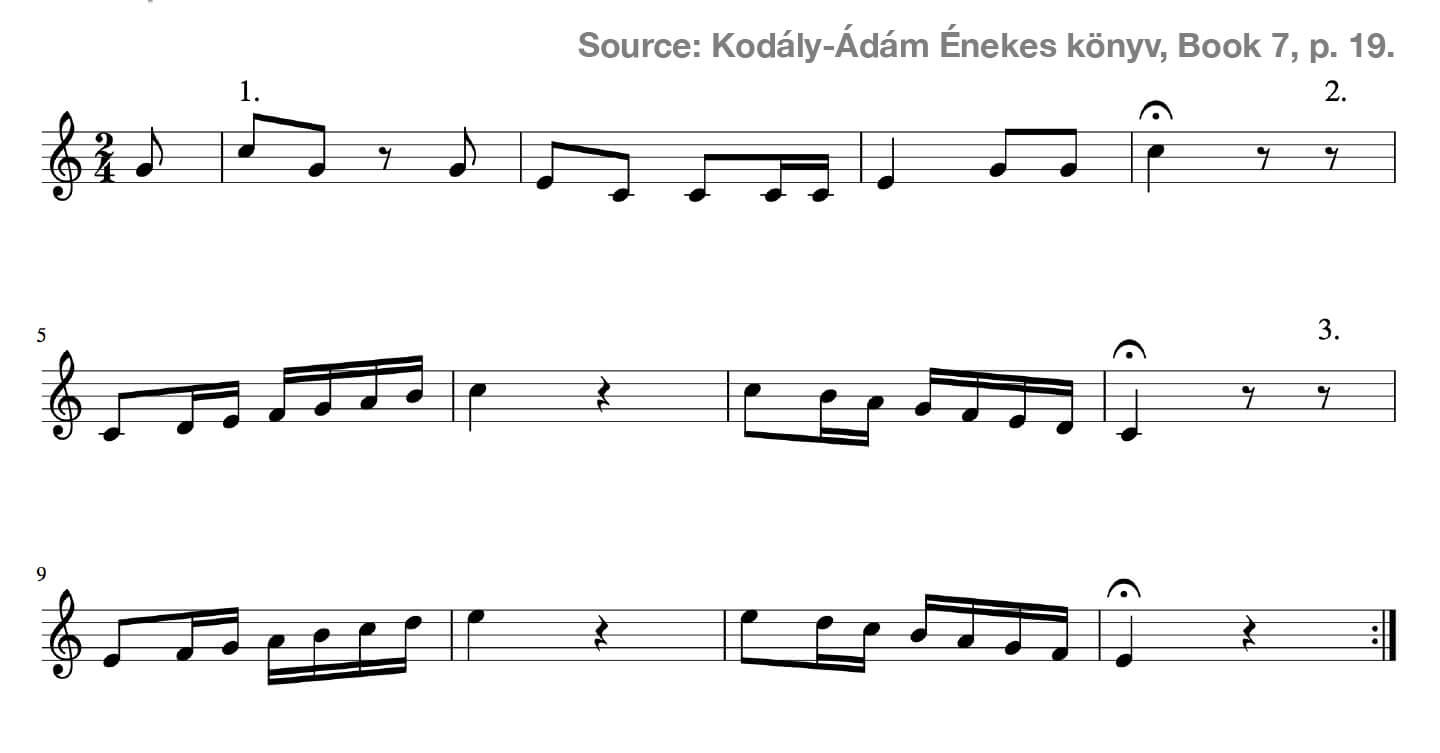
Example 224
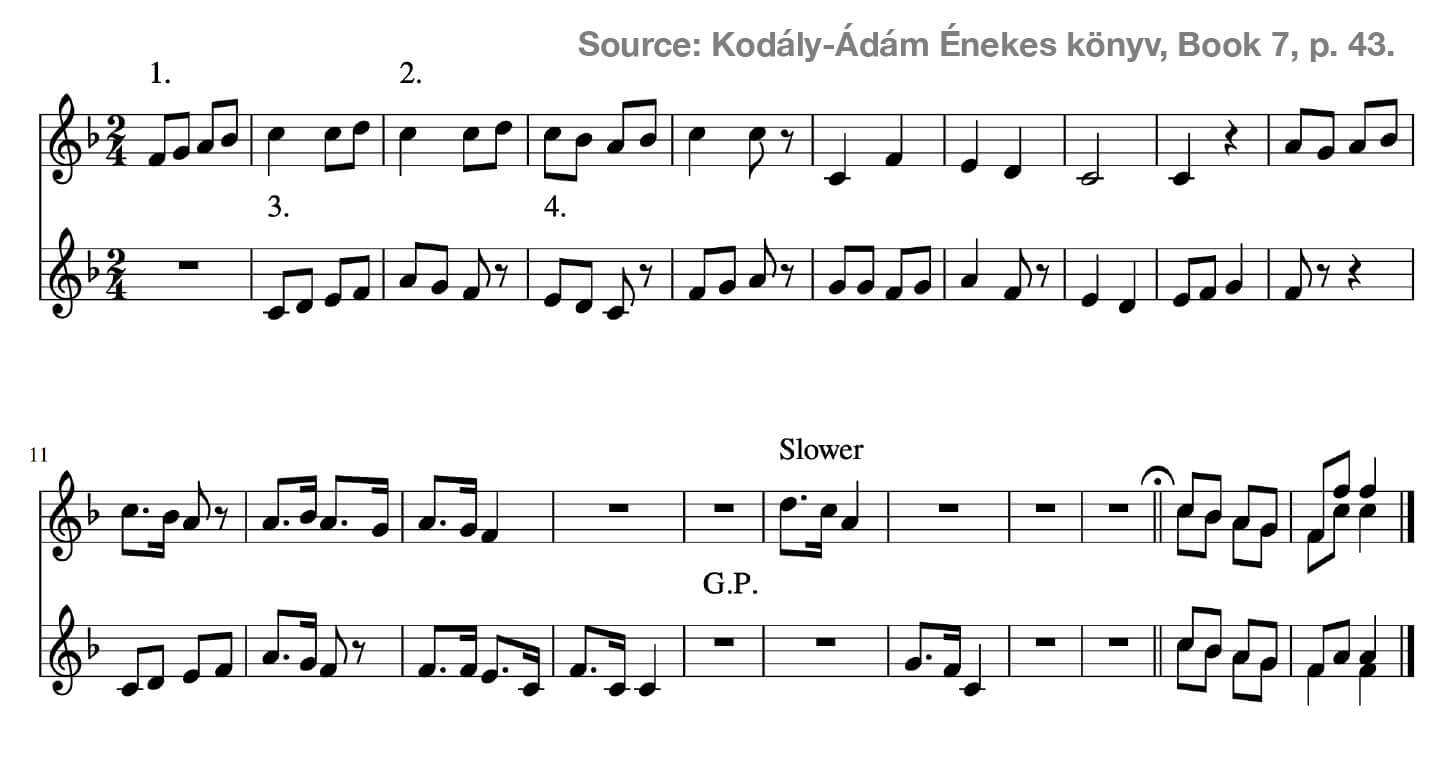
Example 225
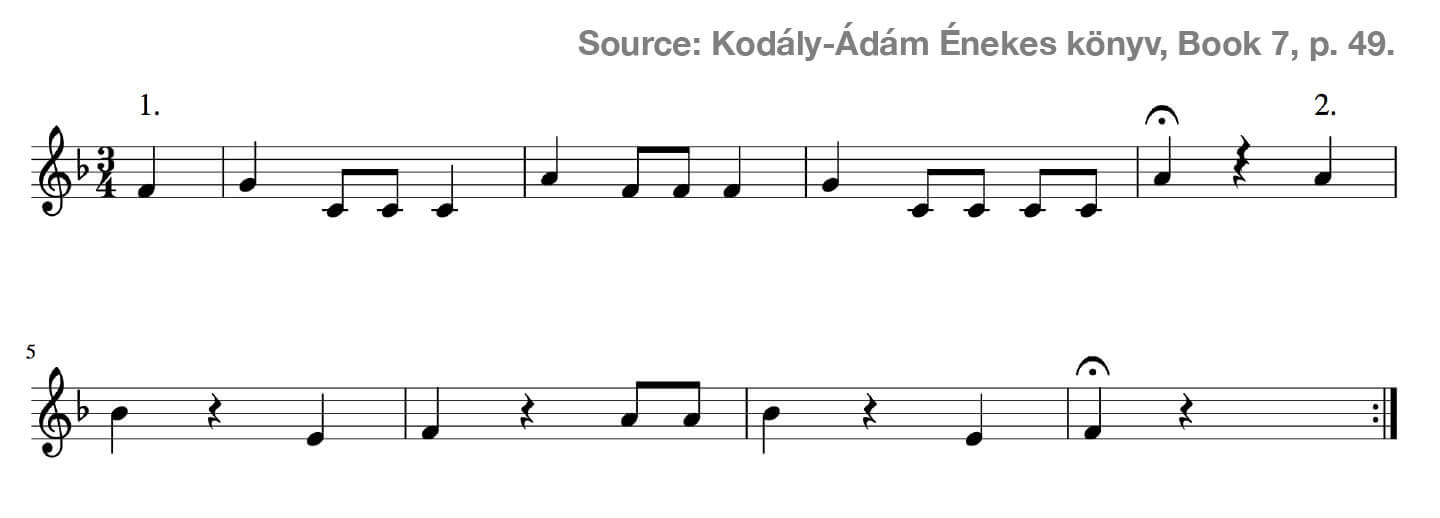
Example 226
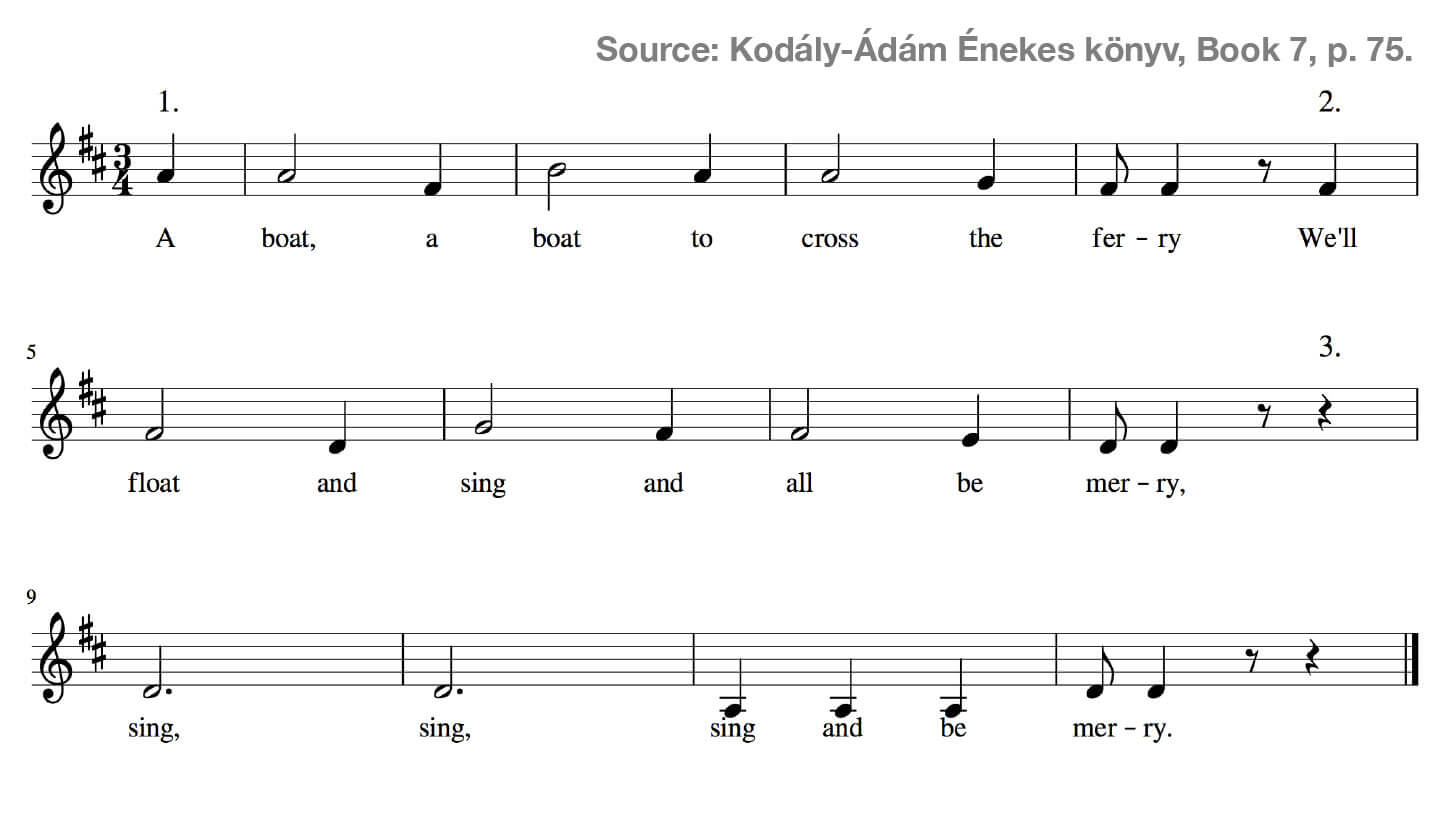
Example 227
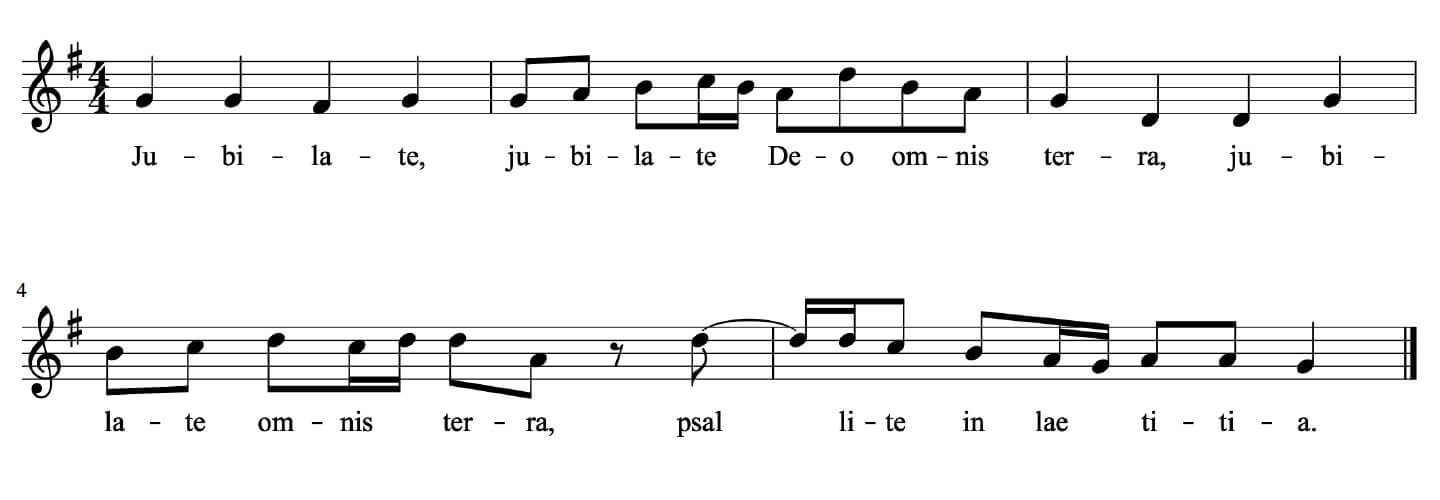
Excerpts form choral pieces
Example 228 (excerpt from a Renaissance canzonetta by Johann Hermann Schein)
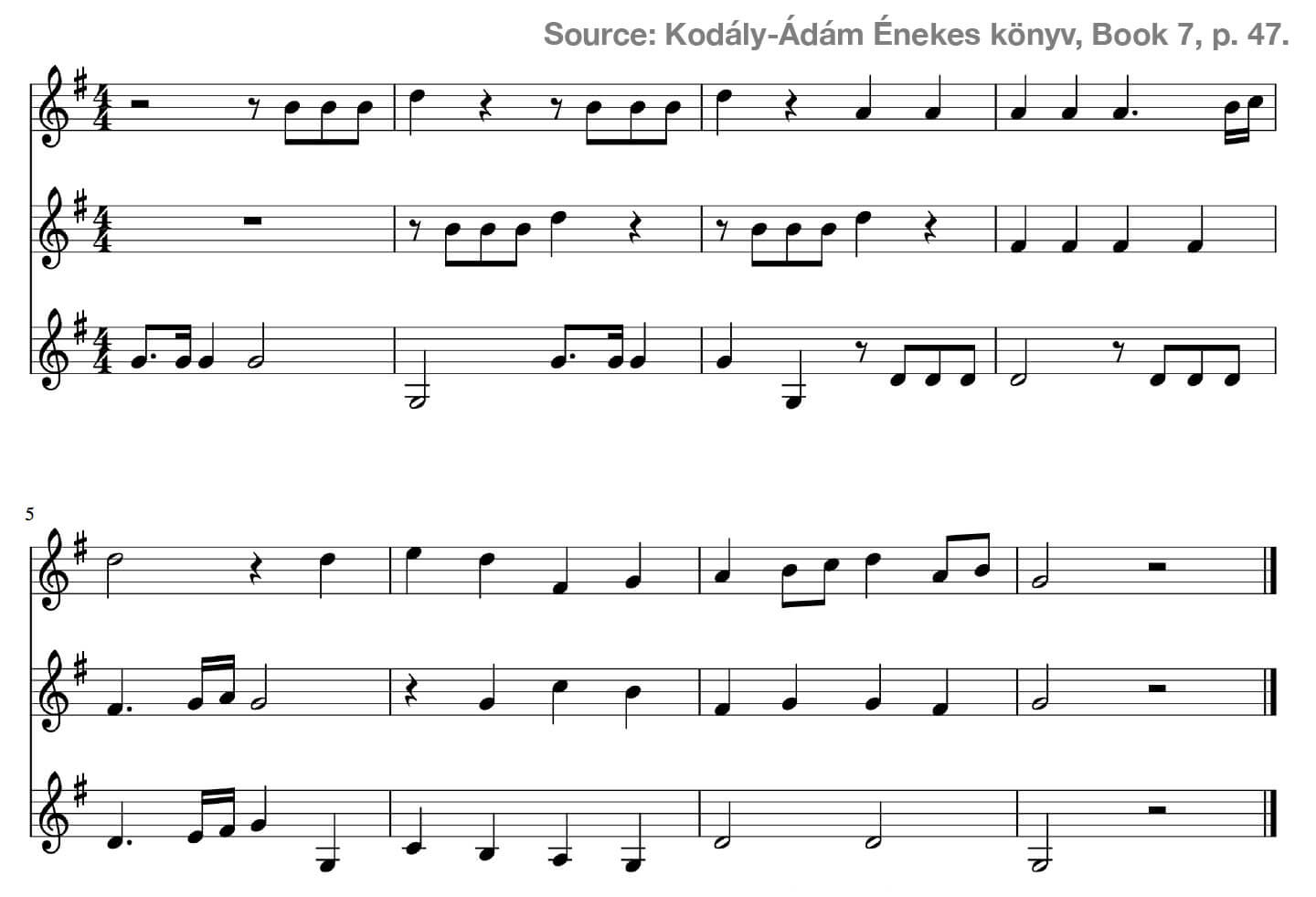
Example 229 (canzonetta by Johann Neuwach)
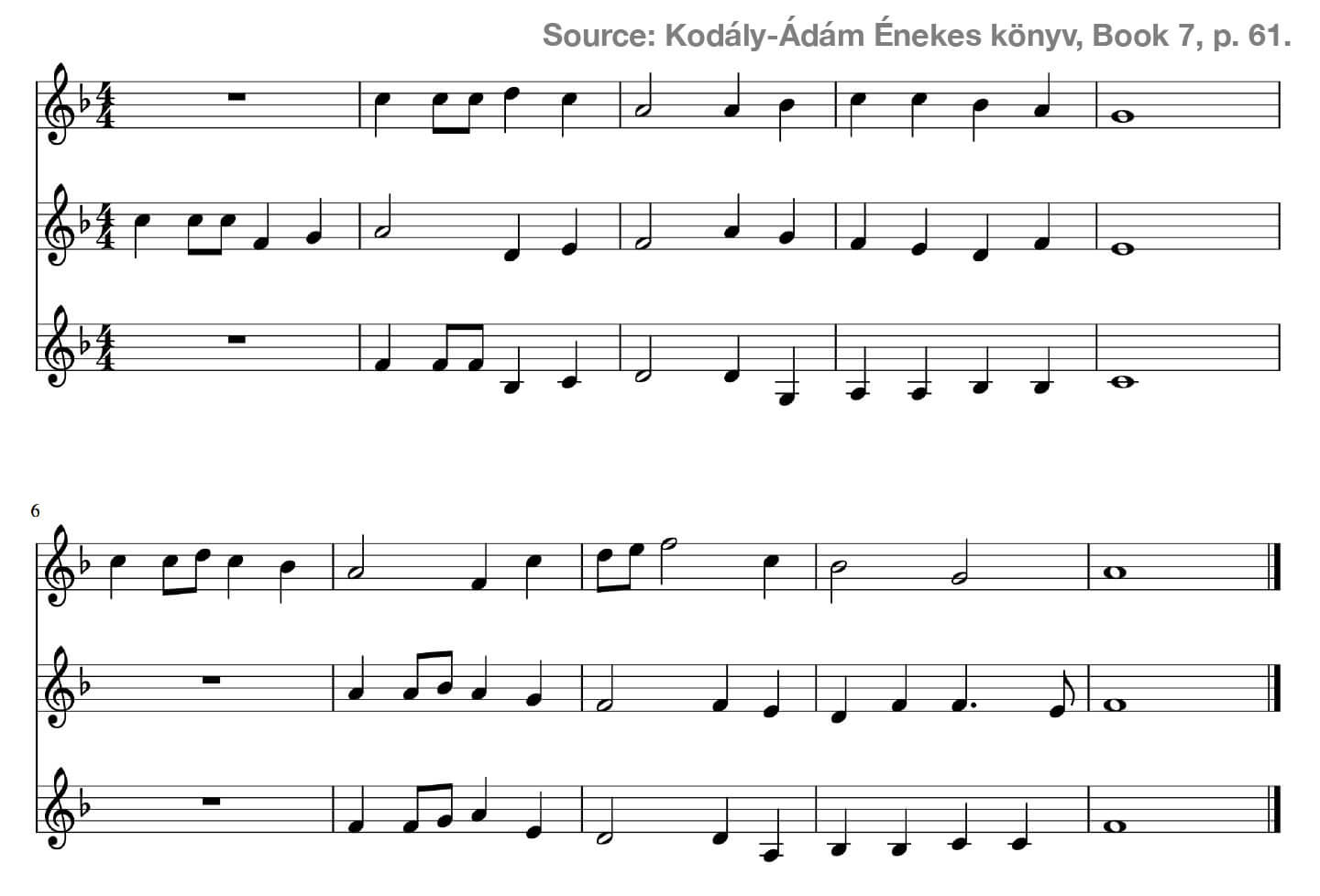
Example 230 (Afro-American spiritual)
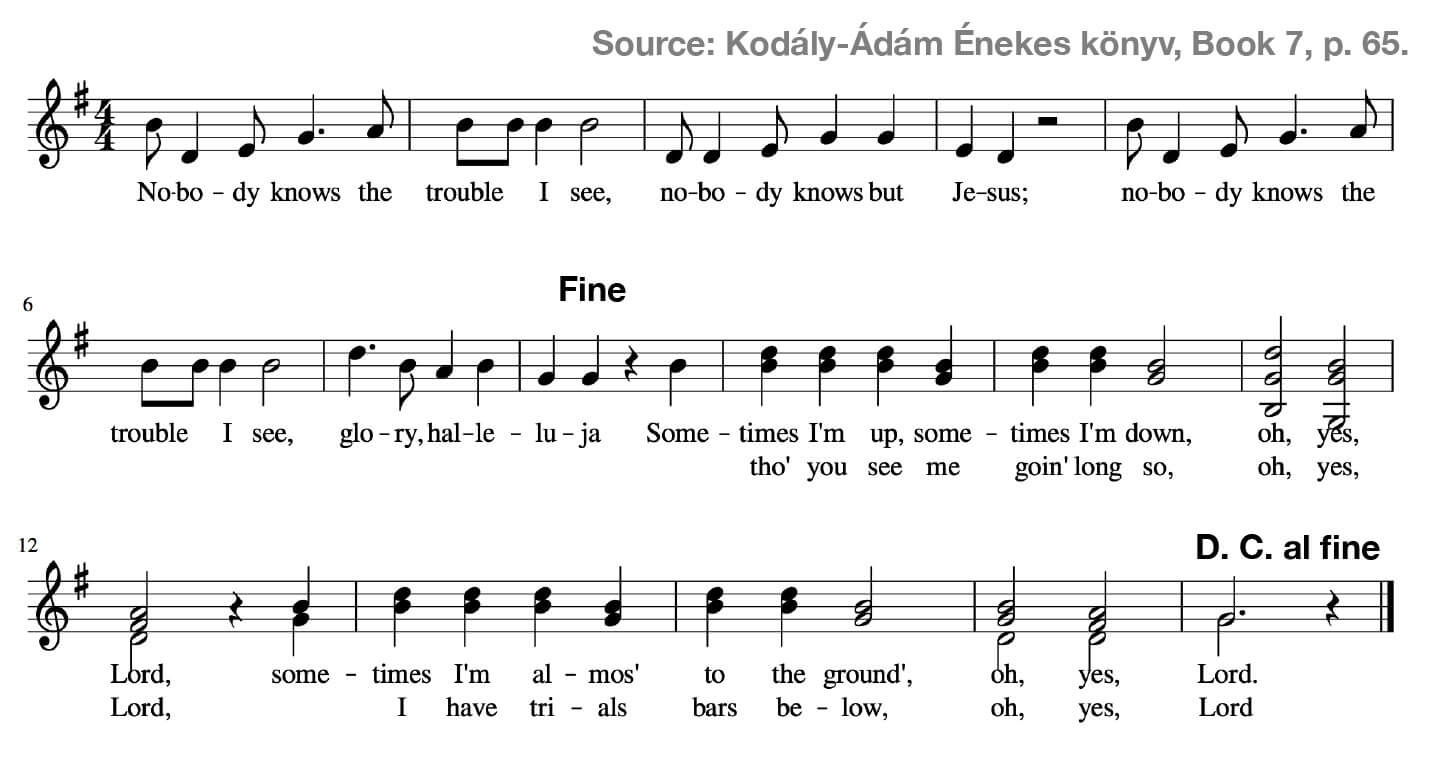
Example 231 (excerpt from a motet by Giuseppe Tartini)
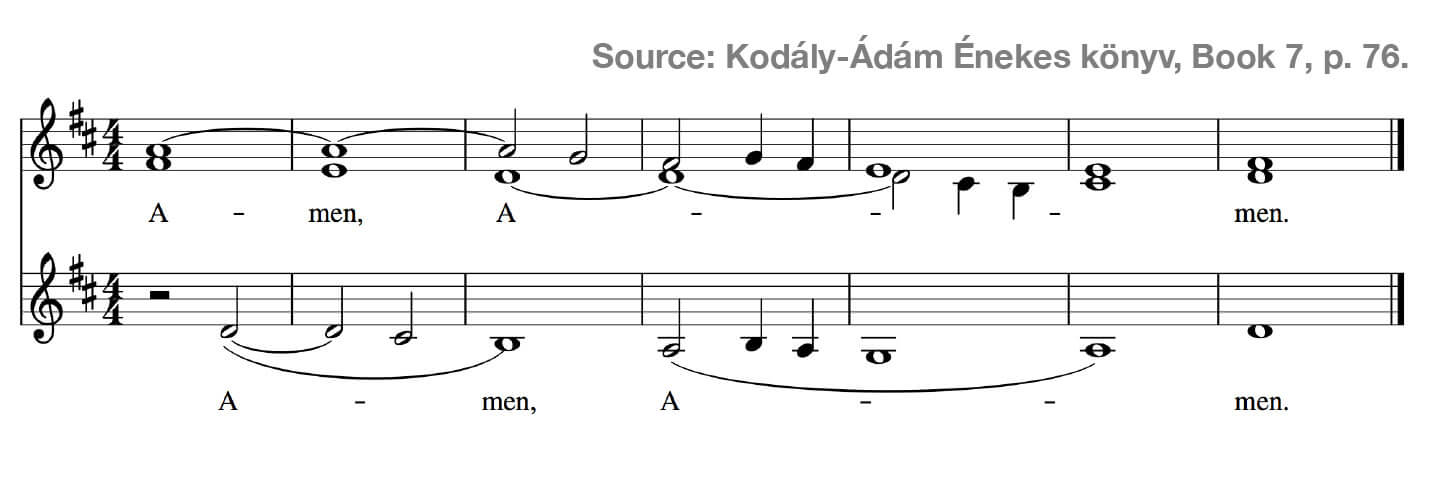
Example 232 (excerpt from Georg Friedrich Händel’s Judas Maccabaeus)
